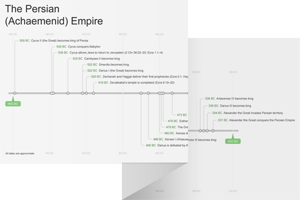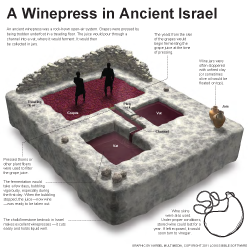13:1 and it was found written in it See Deut 23:3–5; note on Deut 23:3.
13:3 they separated all of the foreign people from Israel The point of separating from surrounding cultures was not racial; it was to prevent God’s people from falling into idolatry (see Exod 34:11–16; Deut 7:1–6). Those foreigners who worshiped the God of Israel were welcome to become part of Israel, as Ruth the Moabite was (Ruth 1:16–17; see Ezra 6:21). See note on Ezra 9:1–10:44.
13:4 Eliashib This is likely not the high priest of the same name (Neh 3:1, 20). If it were the same person, it would be unusual to identify him as the priest in charge of the temple storerooms rather than as high priest.
Tobiah The enemy of Nehemiah introduced in 2:10. He was an Ammonite who was married to a Jewish woman and had close ties in the Jewish community (6:17–19), which created trouble for Nehemiah. See 2:10 and note.
13:5 frankincense A resin from terebinth-like trees located primarily in southern Arabia, and a key ingredient in the incense formula used in the temple (Exod 30:34–38).
13:6 I was not in Jerusalem Nehemiah first went to Jerusalem to serve as governor in 444 bc. After 12 years, he went to Artaxerxes in 432 bc for an unspecified time before returning to Jerusalem (see note on Neh 2:6).
Artaxerxes king of Babylon Artaxerxes was a Persian king who ruled Babylon (Ezra 4:7 and note), and may have resided in Babylon at this time. See note on Neh 2:1.
13:10 the food of the Levites had not been given A violation of the covenant that the community had signed (9:38; 10:28–39).
13:11 Why is the house of God forsaken A violation of the commitment in 10:39.
13:14 Remember me, my God, concerning this One of the remembrance prayers offered in Nehemiah (5:19; 6:14; 13:22, 29, 31). See note on 5:19.
13:15 treading the wine press on the Sabbath Another violation of the commitment document signed by the remnant (10:31).
wine, grapes and figs Suggests the time is probably somewhere between August and October—the months of the grape harvest. The figs mentioned were autumn figs, which ripen in August (Jer 8:13; summer figs ripen in June).
13:16 Tyrian men Tyre was a Phoenician port city north of Judah that is mentioned frequently in the Bible (for example, 1 Kgs 5:1; Ezek 26–28; Mark 7:24; Acts 21:3).
The principal city of Phoenicia (modern Lebanon) in Nehemiah’s day, Tyre |
13:19 before the Sabbath About 5 p.m. on Friday.
after the Sabbath About 11 a.m. on Sunday morning (Neh 7:3).
my young men Probably refers to a group of men under Nehemiah’s personal authority. See note on 4:16.
13:23 who had married women of Ashdod, Ammon, and Moab Another violation of the covenant signed by the community (10:30). See v. 3 and note; compare note on Ezra 9:1–10:44.
13:24 spoke Ashdodite Likely a Philistine dialect of Canaanite.
the tongues of other nations The languages of their mothers.
13:25 cursed them A reference to the curse of Neh 10:29.
pulled out their hair Possibly describes the plucking of beards, a form of humiliation (see Isa 50:6; compare Ezra 9:3).
13:26 Yet the foreign women made even him sin See 1 Kgs 11:1–8.
13:28 Sanballat the Horonote A leader who opposed the rebuilding of the wall of Jerusalem (see Neh 2:10 and note). The high priest was not allowed to marry a foreigner (Lev 21:14), and Sanballat was particularly hostile to Nehemiah’s efforts, so this marriage is singled out as especially dangerous to the integrity of the Jewish community.
13:29 the covenant of the priesthood and the Levites The special covenant Yahweh made with the tribe of Levi, through which they were commanded to teach His laws to the rest of the nation (Lev 10:11; Deut 31:11–13; 33:10; Mal 2:4–7).
13:31 a contribution of the wood offering Wood for burning sacrifices on the altar. See note on Neh 10:34.

|
About Faithlife Study BibleFaithlife Study Bible (FSB) is your guide to the ancient world of the Old and New Testaments, with study notes and articles that draw from a wide range of academic research. FSB helps you learn how to think about interpretation methods and issues so that you can gain a deeper understanding of the text. |
| Copyright |
Copyright 2012 Logos Bible Software. |
| Support Info | fsb |
 Loading…
Loading…




 Tyre
Tyre  was located about 20 miles south of Sidon, its sister city (e.g.,
was located about 20 miles south of Sidon, its sister city (e.g.,